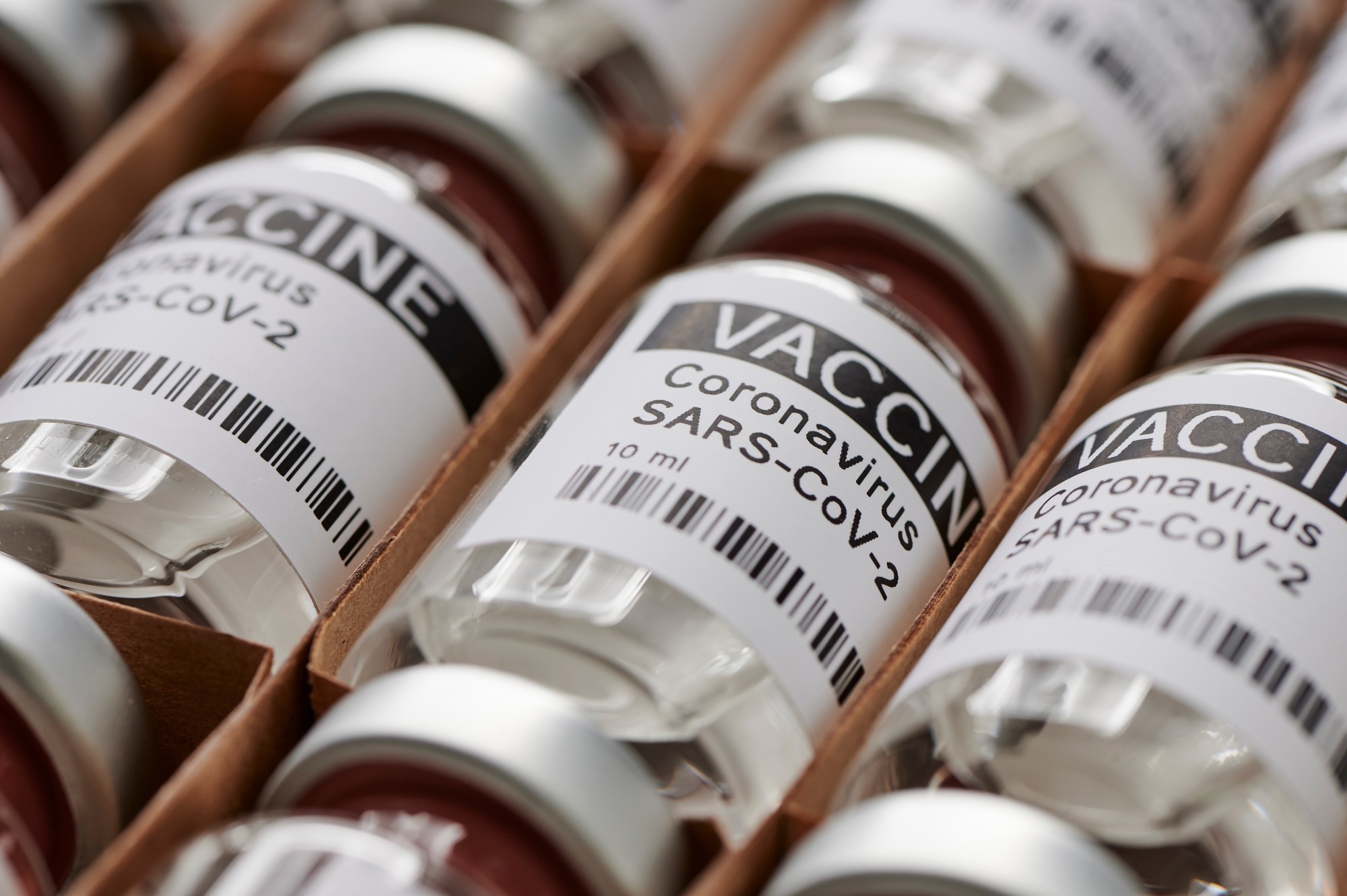In a recent article published in PLOS ONE, researchers designed five deoxyribonucleic acid (DNA) vaccine candidates based on different severe acute respiratory syndrome coronavirus 2 (SARS-CoV-2) strains. They evaluated the immunogenicity of each in mice.
 Study: Evaluation of immunogenicity-induced DNA vaccines against different SARS-CoV-2 variants. Image Credit: M-Foto/Shutterstock.com
Study: Evaluation of immunogenicity-induced DNA vaccines against different SARS-CoV-2 variants. Image Credit: M-Foto/Shutterstock.com
Background
A safe and effective vaccination strategy is the key to combating SARS-CoV-2, the virus that caused the coronavirus disease 2019 (COVID-19) pandemic, which led to worldwide lockdowns, socioeconomic disruption, and an unprecedented threat to public health.
In the past, heterologous vaccination strategies have successfully combated many deadly diseases, such as malaria, influenza, and human papillomavirus.
Studies have shown that different vaccine platforms, such as DNA, adenoviral vectors, modified vaccinia Ankara viral vectors, and recombinant subunit vaccines, significantly increase humoral and cellular immunity.
In their previous study, researchers found DNA vaccine candidates safe, stable (at room temperature), and more convenient to store and ship than other vaccine platforms; thus, they seem apt for emergencies like the one induced by the COVID-19 pandemic.
DNA vaccines also elicit robust humoral and cellular immune responses. However, they often do not induce significant clinical benefits.
About the study
Given the proven benefits of homologous and heterologous vaccination against SARS-CoV-2, researchers tested the effectiveness of a prime-boost regimen of five DNA vaccines they developed against SARS-CoV-2 in a mouse model.
These newly developed vaccine candidates were based on the first genotype spike (S), which includes the Wuhan strain, the first ever SARS-CoV-2 strain isolated in Korea, and the Alpha, Beta, Gamma, and Delta variants, which are classified as SARS-CoV-2 variants of concern (VOCs) by the World Health Organization (WHO).
They intramuscularly (i.m) vaccinated mice with these DNA vaccine candidates to assess their immunogenicity based on elicited cellular and humoral immune responses.
For humoral immunogenicity evaluation, they drew the blood of vaccinated mice one week after the last vaccination dose. The sera of vaccinated test animals were analyzed for SARS-CoV-2 specific total immunoglobulin G (IgG) and its subtypes using enzyme-linked immunosorbent assay (ELISA).
Then, they calculated the total IgG titers as half maximal effective concentration (EC50) while determining P-values using one-way ANOVA with Fisher’s LSD test. They also calculated the ratios of IgG2b and IgG2c to IgG1.
Additionally, they used a plaque reduction neutralization test (PRNT) to analyze neutralizing antibody (nAb) levels in the sera of the vaccinated animals; further, they found P-values using a two-way analysis of variance (ANOVA) with Tukey’s test.
A surrogate virus neutralization test (sVNT) helped test mice sera for their neutralization rate, where p-values were determined using one-way ANOVA with Dunnett’s test.
Furthermore, the researchers evaluated cell-mediated immune responses elicited in response to all five DNA vaccine candidates a week after the last vaccination.
To this end, they collected mice splenocytes and tested them using a spike glycoprotein peptide pool against unstimulated cells.
To evaluate cross-vaccination immunogenicity, the researchers autopsied mice one week after the final vaccination; further, they isolated their splenocytes to measure the levels of secreted cytokines using ELISpot compared to the unstimulated group.
Results
The authors noted that the mice vaccinated with DNA vaccine candidates based on the S genotype, Alpha, and Beta variants had higher nAb and total IgG levels than the others.
Exceptionally, the Alpha variant-based vaccine candidate elicited a strong and diverse cytokine response.
Additionally, splenocytes of all test mice showed high levels of cytokines, such as interleukin-6 (IL-6), IL-13, and interferon-gamma (IFN-γ), while the Alpha variant-based DNA vaccine also elicited more tumor necrosis factor-α (TNF-α) levels.
In mice vaccinated with homologous vaccination based on Alpha VOC, higher levels of IL-6 and IL-13 were associated with reduced angiotensin-converting enzyme-2 (ACE2) expression and increased SARS-CoV-2 entry via the nasal and bronchial epithelium. In addition, these mice displayed increased TNF-α levels than the other groups.
Furthermore, mice vaccinated with S/S and S/Alpha showed markedly increased levels of T helper cells (Th1) and Th2-secreted cytokines, IFN-γ, and IL-6/13, suggesting that DNA vaccine candidates drive strong T cell responses by balancing cytokine levels.
Conclusions
Overall, the study results suggested that the efficacy of DNA vaccine candidates was variant-dependent, with vaccines based on the S and Alpha variants enhancing higher immune responses than the other vaccines.
The results, however, remained the same regardless of boosting with heterologous or homologous vaccines.
Thus, whether receiving a homo- or heterologous regimen, recipients of these vaccines require prolonging the elicited immune response (by booster vaccination) to achieve adequate protective efficacy against SARS-CoV-2.
Further research should identify which vaccination strategies are optimal for long-term immunity and which T resident memory cells contribute most to confer protection against SARS-CoV-2.